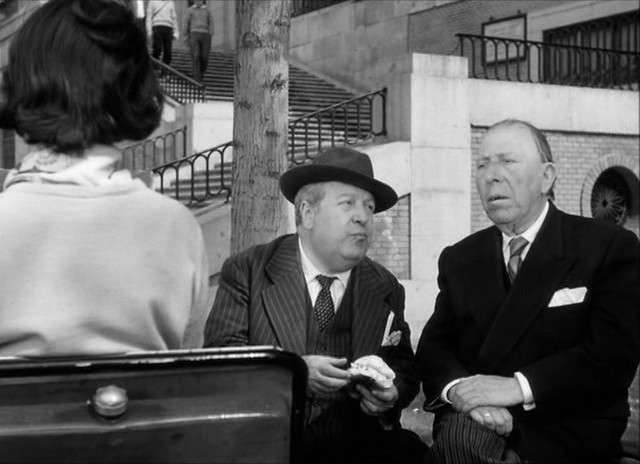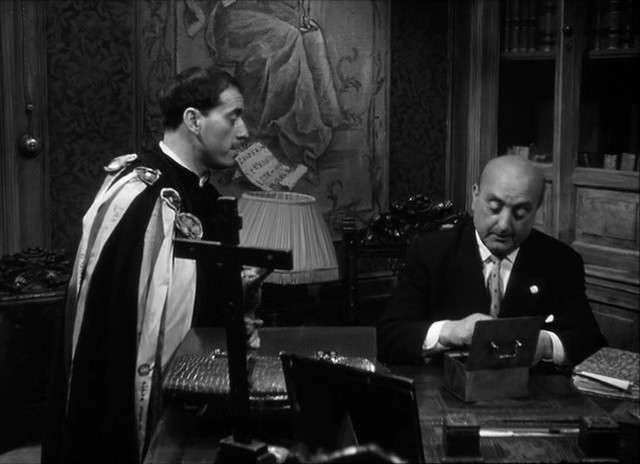![]()
![29f7c043f76a2bde437fd0d52a185152]()
Synopsis:
As in Vampir-Cuadecuc, this film turns on two basic axes: the inquiry into ways of cinematographic representation and a critical image of official Spain at the time of the Franco dictatorship. “Montage of attractions” and Brechtianism in strong doses. Umbracle is made up of fragments (some are archive footage) that resound rather than progress by unusual links, with dejá vu scenes that promise us more but remaintensely unfinished. Jonathan Rosenbaum said: “few directors since Resnais have played so ruthlessly with the unconscious narrative expectations to bug us”. Learning from the feeling of strangeness caused by Rossellini as he threw well known actors into savage scenery in southern Europe.
Portabella makes Christopher Lee wander around a dream-like Barcelona. Without a doubt Portabella’s most structurally complex and most profoundly political film, that is ferociously poetic.
— pereportabella.com
Review:
During the filming of Jess Franco’s Count Dracula (1970), experimental filmmaker Pere Portabello was engaged to direct a making-of documentary, titled Cuadecuc, vampir (1971), and sometime before, during, or after, it seems star Christopher Lee was snagged to appear in a few scenes which Portabello edited into a feature film.
Made in 1970 but released in 1972, Umbracle begins with has a zoological attendant checking the ground-level gallery and seeing Lee strolling and meticulously gazing at the pickled and mounted creatures, while the soundtrack features undulating female voices that waver in harmony and synchronicity. Once outside, Lee, with slicked back hair and stylish sunglasses, buys a cigar from a merchant, and as he lights it, spots a man dragged into a car and taken away.
We then follow a man as he seats himself in front of a woman (Jeannine Mestre, cast as one of Count Dracula’s child-eating vixens) on a moving passenger train, and stares her down after the train enters a dark mountain tunnel.
Portabello returns to a regurgitation of Lee’s scenes in the museum and the street abduction before he launches into a series of on-camera monologues where (presumably) Spanish directors read guidelines of the Do’s and Don’t’s of filmmaking as codified by the Franco government. We then pick up with the woman buying shoes in a modish shop set to what sounds like a track from the Mike Curb Congregation, during which Portabello intercuts to excerpts from a war film in which a priest has flashbacks before engaging in a battle.
A pair of clowns perform a routine on an empty stage, after which Lee reappears on stage and sings a set of German and French songs before giving a dramatic reading of Edgar Allen Poe’s “The Raven.” Portabello then cuts to a moody, dramatic sequence where Lee beds Mestre, after which the director intercuts Lee walking the street with a montage of slapstick excerpts featuring Laurel & Hardy, Charlie Chaplin, and Harold Lloyd, and the audio track with layered utterances of ‘Do-Re-Mi-Fa-So-La-Ti-Do.’
Not unlike surrealist filmmaker Fernando Arrabal (Viva la muerte), Portabello films animal killings in a sequence that’s prolonged for shock value: chickens being uncrated, hung from a conveyor, killed, and processed. The grisliest moments (not for the squeamish) show close-ups of the birds being bled from the mouth while a Mike Curb version of a Carpenter’s “Close to You” gently flows on the soundtrack.
The film’s finale consists of Lee being interrupted by a stranger while reading Bram Stoker’s Dracula, and two sequences that reveal Portabello’s playfulness and firm grasp of dramatic (and surreal) mood: Lee’s final footage has him seated in a living room apartment while the camera tracks eerily backwards, ever so slowly down the front door hallway, and the only sound is an increasingly urgent knocking / pounding at the door. It’s an unnerving moment that visually noir, but sonically evocative of some indie murder thriller where violence is about to explode.
The more playful secondary sequence has Mestre spinning a Beethoven record, and as she sits down and dials the phone, the music gets stuck in a rut. What initially resembles repeated and rewound footage of Mestre dialing, picking up / down the receiver is just acting, allowing for Portabello’s camera to zoom in and hover around the actress, so while it visually resembles a 1920s exercise in surrealism, it’s also a small masterpiece of technical creativity, relying on performance rather than editing to achieve a human caught in a skipping groove.
Like Cuadecuc, vampir, Portabello uses high contrast B&W film and has the light levels blow out, resembling solarized video. The effects are extremely arresting, especially when he passes under tree branches. These visual similarities with vampire lead one to believe the high contrast imagery is less of a homage to Murnau’s 1922 Nosferatu, and just of Portabello’s own eccentric style.
— Mark R. Hasan (KQEK.com)
![]()
![]()
![]()
![]()
![]()
![]()
![]()
![]()
![]()
http://nitroflare.com/view/F70885727F790C3/Umbracle_%281970%29_–_Pere_Portabella.part1.rar
http://nitroflare.com/view/58A886754C79EE3/Umbracle_%281970%29_–_Pere_Portabella.part2.rar
Language(s):English, Spanish
Subtitles:English, French, Spanish (muxed)
If you enjoy this blog, you can support it by buying a NITROFLARE premium account from the links above. Thanks you for support












































































































































